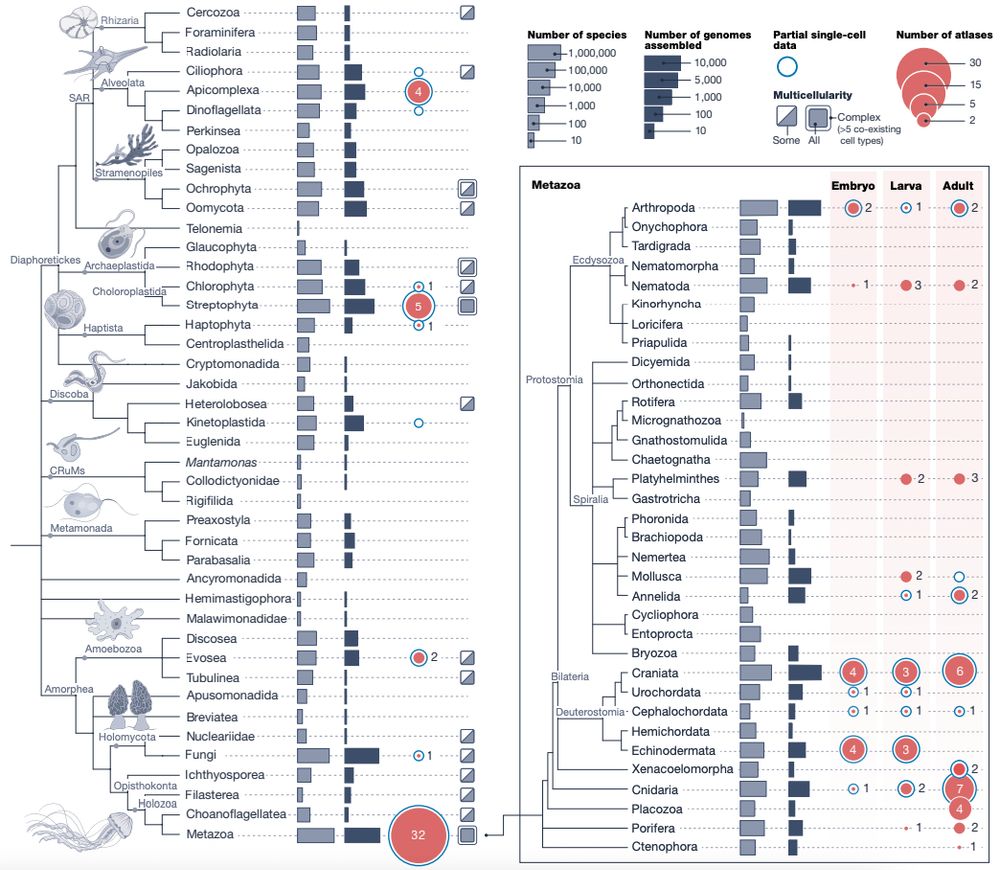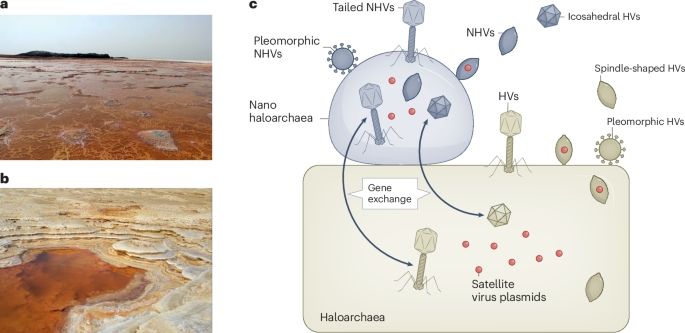
Archaea is the coolest domain of life! 🔬🦠
PPU PhD @pasteur.fr, Mart Krupovic
MSc Microbiology @helsinki.fi, Mikael Skurnik
BSc Biomedicine @UB.edu
rdcu.be/euila
Our main results stay the same: S. islandicus follows a cell cycle akin to that of some eukaryotes, like the budding yeast, with cellular processes cycling similarly.
old🧵cited below👇
They provide heat-stable enzymes, insights into early Earth, and tools for biotech.
Our new thematic issue in #FEMSMicrobiolEcol captures how diverse this field is. Explore the collection👉 buff.ly/kD8fmOL

They provide heat-stable enzymes, insights into early Earth, and tools for biotech.
Our new thematic issue in #FEMSMicrobiolEcol captures how diverse this field is. Explore the collection👉 buff.ly/kD8fmOL
🧫🦠🧪
🧫🦠🧪
@sgribaldo.bsky.social
#microbiology #archaea #GutMicrobiota #GutMicrobiome

@sgribaldo.bsky.social
#microbiology #archaea #GutMicrobiota #GutMicrobiome
www.findaphd.com/phds/project...
📅 January 7, 2026
Please RP🙏thx!


www.findaphd.com/phds/project...
📅 January 7, 2026
Please RP🙏thx!
Brilliant study led by @fmacleod.bsky.social and Andriko von Kügelgen. Tight collaboration with @buzzbaum.bsky.social and lab. Congrats to all authors!
www.biorxiv.org/content/10.1...

Brilliant study led by @fmacleod.bsky.social and Andriko von Kügelgen. Tight collaboration with @buzzbaum.bsky.social and lab. Congrats to all authors!
www.biorxiv.org/content/10.1...
🪆nested archaeal symbioses
🌱microbiota driven drought responses in plants
🏗️ BAM complex in Bacteroidota
💨microbial fermentative growth in the gut
🍸hospital-specific phage therapy cocktail
and much more..!
www.nature.com/nmicrobiol/v...

🪆nested archaeal symbioses
🌱microbiota driven drought responses in plants
🏗️ BAM complex in Bacteroidota
💨microbial fermentative growth in the gut
🍸hospital-specific phage therapy cocktail
and much more..!
www.nature.com/nmicrobiol/v...
rdcu.be/eLtCH

rdcu.be/eLtCH
We show that #Expansion #Microscopy is a broad-spectrum modality for Euks, enabling 3D phenotypic maps rooted to phylogeny.
#ProtistsOnSky #SciComm #SciSky
www.cell.com/cell/fulltex...
We show that #Expansion #Microscopy is a broad-spectrum modality for Euks, enabling 3D phenotypic maps rooted to phylogeny.
#ProtistsOnSky #SciComm #SciSky
www.cell.com/cell/fulltex...
Asgard histones form closed and open hypernucleosomes. Closed are conserved across #Archaea, while open resemble eukaryotic H3–H4 octasomes and are Asgard-specific. More here: www.cell.com/molecular-ce...

Asgard histones form closed and open hypernucleosomes. Closed are conserved across #Archaea, while open resemble eukaryotic H3–H4 octasomes and are Asgard-specific. More here: www.cell.com/molecular-ce...
( www.nature.com/articles/s41... ):
www.nature.com/articles/s41...

( www.nature.com/articles/s41... ):
www.nature.com/articles/s41...
Out now in Nature Microbiology, by Yifan Zhou, Mart Krupovic & colleagues.
@mkrupovic.bsky.social
@yifanzhou.bsky.social
@deemteam.bsky.social
www.nature.com/articles/s41...

Out now in Nature Microbiology, by Yifan Zhou, Mart Krupovic & colleagues.
@mkrupovic.bsky.social
@yifanzhou.bsky.social
@deemteam.bsky.social
www.nature.com/articles/s41...
@mkrupovic.bsky.social @deemteam.bsky.social @anagtz.bsky.social
www.nature.com/articles/s41...

@mkrupovic.bsky.social @deemteam.bsky.social @anagtz.bsky.social
www.nature.com/articles/s41...
Free access link: rdcu.be/eLtCH
🧵 by @yifanzhou.bsky.social 👇
@mkrupovic.bsky.social @deemteam.bsky.social @anagtz.bsky.social
www.nature.com/articles/s41...

Free access link: rdcu.be/eLtCH
🧵 by @yifanzhou.bsky.social 👇
doi.org/10.1073/pnas...

doi.org/10.1073/pnas...

We used to think persistent infections were harmless… but our latest work shows otherwise. Read it to learn more!

We used to think persistent infections were harmless… but our latest work shows otherwise. Read it to learn more!
We identified Hib, a new hibernation factor broadly distributed across archaea.
Check out the preprint 👉 biorxiv.org/content/10.1101/2025.10.11.676729v1
(1/🧵)
We identified Hib, a new hibernation factor broadly distributed across archaea.
Check out the preprint 👉 biorxiv.org/content/10.1101/2025.10.11.676729v1
(1/🧵)
Non-photosynthetic Plastid Replacement by a Primary Plastid in the Making
www.biorxiv.org/content/10.1...

Non-photosynthetic Plastid Replacement by a Primary Plastid in the Making
www.biorxiv.org/content/10.1...
Check out this work co-led with @benadler.bsky.social here:
www.nature.com/articles/s41...

Check out this work co-led with @benadler.bsky.social here:
www.nature.com/articles/s41...
The images are negatively stained electron micrographs taken from archaella bundles isolated from the archaeon Sulfolobus acidocaldarius.
Check the issue out here:
www.nature.com/nmicrobiol/v...

The images are negatively stained electron micrographs taken from archaella bundles isolated from the archaeon Sulfolobus acidocaldarius.
Check the issue out here:
www.nature.com/nmicrobiol/v...

Read more: 🔗 dome.univie.ac.at/news-events/...

Read more: 🔗 dome.univie.ac.at/news-events/...
www.nature.com/articles/s41...

www.nature.com/articles/s41...
@rkoszul.bsky.social @natmicrobiol.nature.com @cnrs.fr @institutpasteur.bsky.social
www.nature.com/articles/s41...

@rkoszul.bsky.social @natmicrobiol.nature.com @cnrs.fr @institutpasteur.bsky.social
www.nature.com/articles/s41...


